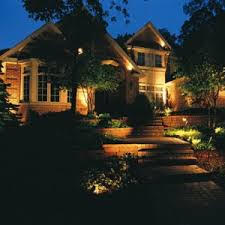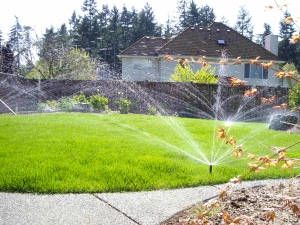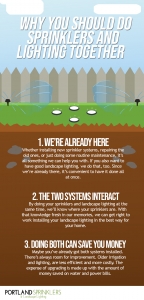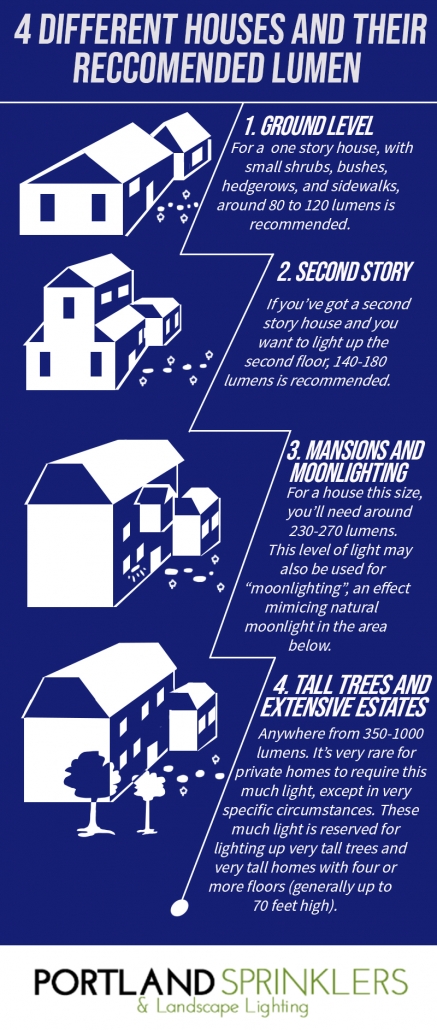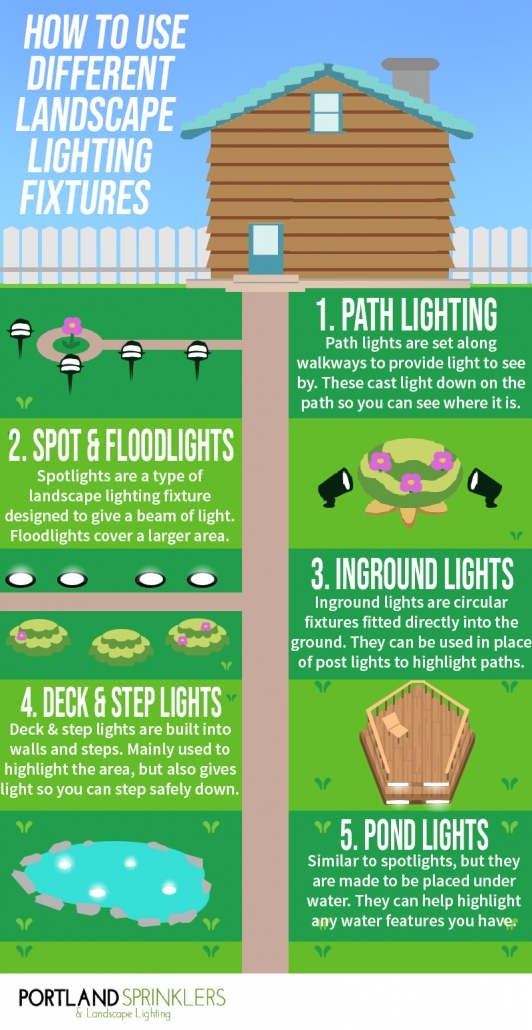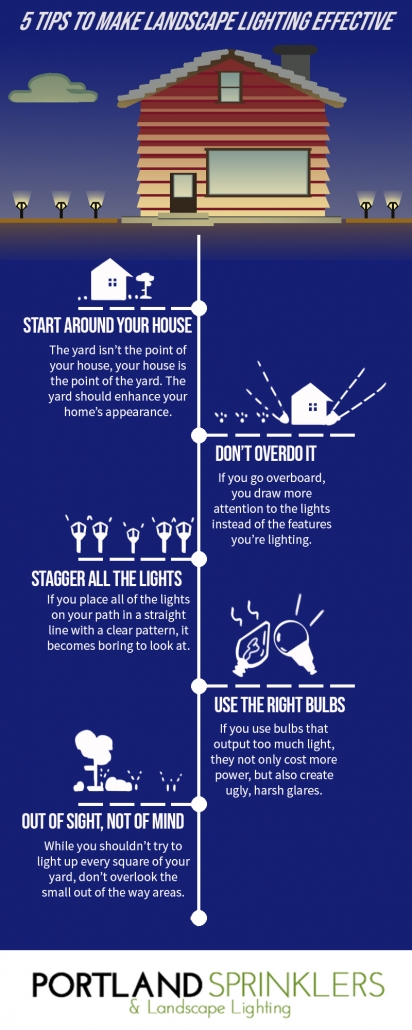Gorgeous Landscape Lighting
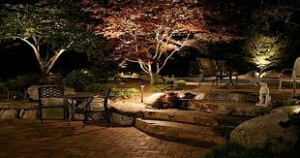 Lighting is important when it comes to seeing where you’re going. It has great value for security. These are the practical aspects of landscape lighting, but you shouldn’t neglect the visual appeal, either. Landscape lighting can make your home a stunning sight. If you need the lighting for practical reasons, there’s no reason you shouldn’t also make it gorgeous. How can you manage this? Well, let’s take a look at some options.
Lighting is important when it comes to seeing where you’re going. It has great value for security. These are the practical aspects of landscape lighting, but you shouldn’t neglect the visual appeal, either. Landscape lighting can make your home a stunning sight. If you need the lighting for practical reasons, there’s no reason you shouldn’t also make it gorgeous. How can you manage this? Well, let’s take a look at some options.
1. Take Advantage of The Darkness
Features that look great in the day can be completely invisible at night, even if they’re large. If there’s a feature to your home that’s a large part of its curb appeal in daylight, you can make that a major focal point at night. During the day, people will see everything in your yard, but landscape lighting can make the best features stand out. Do you have a fancy retaining wall? Landscape lighting makes it grab people’s attention. Have you worked hard to get your trees looking beautiful? Spotlighting can show them off while the scrub around it fades from view.
Use your landscape lighting to make the best features stand out so that anyone seeing your house at night will only see the absolute best your home has to offer.

2. Light All The Trees
If you decide you want to highlight your trees with landscape lighting, it’s a good idea to highlight all of them. Highlighting only some of your trees will produce large areas of strong light and spaces of empty darkness. Those large spaces are more noticeable for the contrast with the highlighted areas, creating an ominous feeling that can ruin the visual appeal.
For large yards with many trees, this isn’t always necessary. You can focus your lighting around your home, highlighting the areas that draw attention to the house and let things fade out as you get further away. Depending on how trees are spaced, there might be other unique designs that can be effective, but that’s more situational. For average sized yards, however, highlighting all the trees is generally more advisable.
3. Floating Features
Darkness isn’t always scary. Properly used, it can be your best friend. If you have a particular feature that’s relatively isolated from others, you can use LED strip lights in recessed areas underneath the feature to create a soft glow underneath it. At night, this creates the illusion of the feature floating in its space. This kind of striking visual design is great for decorative fire pits, benches, and similar features. It creates a welcoming atmosphere without any need for overhead lighting.
4. Ambient vs. Direct Lighting
Landscape lighting isn’t just about shining a bright light on something you want people to see. Even spotlights spread light in an area around where they’re aimed. The extra ambient lighting can be used to great effect. It’s central to the floating look we just mentioned. In that case, the direct lighting is hidden underneath the feature so that all you see is the soft ambient light spilling out.
This ambient light can be used to provide enough light to see as well. If you factor it into your thinking, you can use direct lighting to draw attention to features, then use the ambient lighting to let people see where they need to go without drawing attention away from the features you want people to look at.
5. Water Features
Water features, such as pools, fountains and decorative ponds can add a lot of value to your home’s visual appeal. With good landscape lighting, they can sometimes add even more appeal at night than during the day. Waterproof lights placed under the surface of the water feature can create a glowing pool effect with an inviting, magical quality to it. For fountains with decorative features, you can use the floating trick to catch the eye, combined with spotlights to keep them focused on its decorative qualities.
Swimming pools can also have the same effect. Just remember that people actually in the pool will have a much lower line of sight than someone walking around. Avoid bright lights shining directly towards the pool to avoid blinding people in the water. Good use of ambient lighting can make it a magical experience, whether you’re looking from afar, or going for a nightly dip.
6. Planters
During the day, planters are a great way to add a splash of color to your home. At night, they can double as lanterns. Using LED planters can create a glowing spot of color that not brightens up your home in more ways than one. The color will liven up the night and also draw attention to the area around your house. Try placing a few around the facade of your house and see what you get.
7. Welcome Visitors With Your Garden
If you’ve got a front garden you’re proud of, the right type of lighting can make it a stunning display at night. It will welcome your guests and create a comfortable ambiance that’s visible from the street. Combined with strong path lighting, it also makes for excellent security, as it lights the area around your home. It will be harder for anyone to get to your home without being seen, discouraging burglars from the attempt.
8. Step Lights
Stairs are a major hazard in the dark. There’s no shortage of stories of people coming home at night and stumbling on the stairs because they couldn’t see them. Lighting them up is pretty much essential for safety, but consider step lights instead a lantern or porch light. Soft step lights built into the concrete create enough light to see by without a harsh, centralized light source. It’s more inviting as well, improving your curb appeal.
Landscape Lighting Enhances Your Home’s Beauty
Landscape lighting is all about making the best features of your home stand out. With good planning and proper light selection, you can create a visual striking image of your home and yard at night. There’s no end to the ways you can improve the curb appeal of your home when you know the right way to light it up at night.
At Portland Sprinklers and Landscape Lighting, we’re experts at this. We use high quality, energy efficient LED lights to bring your home to life. If you really want your home to stand out from the rest, then don’t hesitate to get in touch. There won’t be a single person who passes by without remarking on the gorgeous sight.
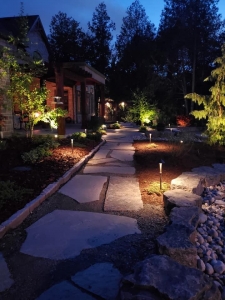 Schedule Your Sprinkler and Landscape Lighting Projects
Schedule Your Sprinkler and Landscape Lighting Projects Materials and Labor Shortages Are Delaying Projects
Materials and Labor Shortages Are Delaying Projects




